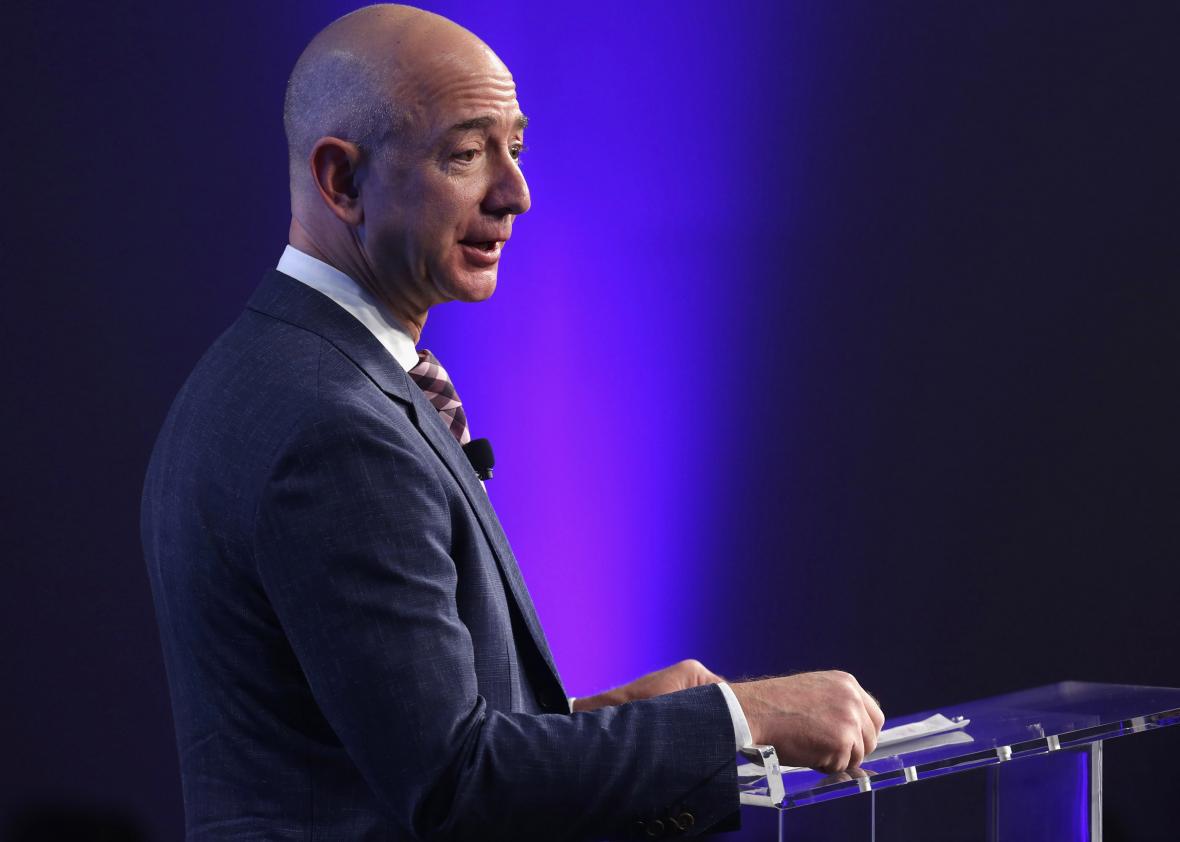Amazon is embarking on a hiring spree, the e-commerce giant announced Thursday, pledging to add 100,000 full-time jobs in the United States in the coming 18 months. Some observers were quick to credit the incoming presidential administration. The Wall Street Journal noted the company was “leveraging plans already in the works in part to patch up its contentious relationship with President-elect Donald Trump.” The argument isn’t a total stretch: After criticizing Trump during the campaign, Amazon CEO Jeff Bezos did participate in the informal meeting between Trump and technology leaders at Trump Tower last month.
At the same time, there’s both more and less here than meets the eye. On one hand, Amazon’s announcement is an indication that the labor market is quite tight. The unemployment rate is 4.7 percent. There have been 75 straight months of jobs growth. And at the beginning of December there were 5.5 million jobs open in the U.S. All of which means that if you need to fill lots of positions, it’s hard to do so by offering temporary or informal work without benefits. You’ve got to promise people full-time work with benefits, even for lower-skilled warehouse jobs. (Thanks, Obama and Yellen!)
Amazon is hiring in part because its many businesses—from web hosting to e-commerce—are growing very rapidly. And creating and sustaining all these businesses, especially those involved in moving lots of goods around the country, are still labor-intensive. Analysts estimate about 60 million people have signed up for Amazon Prime, and they use those order buttons with great frequency and alacrity. Lots of boxes have to packed and shipped every day. And that takes people.
But Amazon’s move, which speaks to a remarkable dynamism within the company, is also a sign of the similarly remarkable redistribution of retail-related labor, from stores to back offices and warehouses. E-commerce is relentlessly taking market share from bricks-and-mortar commerce. As the U.S. Census Bureau’s retail sales report Friday morning showed, on a year-over-year basis, in December, overall retail sales were up 4 percent; but nonstore retailing (e-commerce, catalogs, etc.) rose 13.2 percent.
As people are gaining jobs by the tens of thousands at Amazon, they are losing them in physical retailing. Consider the carnage. Just in the past few weeks, Lowe’s announced it would cut 3,000 jobs; Macy’s said it would close 68 stores and slash employment by 10,000; Sears Holdings said it would close another 200 Sears and Kmarts this year, leading to thousands of job losses; Walmart said it would cut 1,000 jobs at its headquarters; and the Limited suddenly announced it was closing all 250 retail units, which will lead to the loss of another 4,000 jobs.
There is certainly more to come. It’s really tough to be a physical retailer today. Many retailers have large amounts of debt, immense lease commitments to acres of retail square footage that shoppers no longer fill, and are continually losing market share to Amazon and others. Over the coming year, as Amazon ramps up its hiring, many retailers will be slashing their payrolls. And Amazon’s hiring won’t compensate for those losses. As Nelson Schwartz and Nick Wingfield note in the New York Times, you simply need lots fewer people to facilitate retail sales online than you do in person.
So good for Amazon, and good for all the people who will go to work at the company. But Amazon’s expansion has little to do with Donald Trump and his calls to hire more people in America, and everything to do with powerful trends in technology, distribution channels, and consumer habits.
